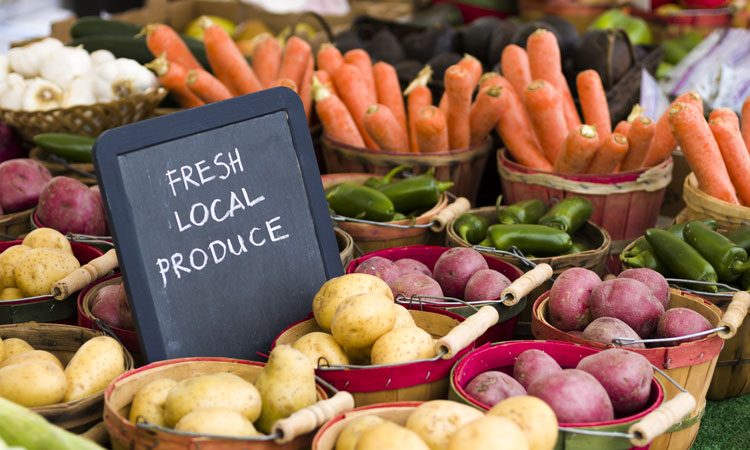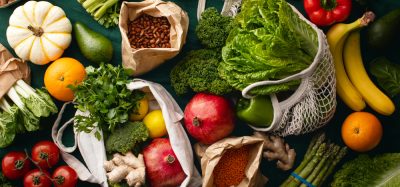Eating local food could reduce blood pressure and diabetes risk
- Like
- Digg
- Del
- Tumblr
- VKontakte
- Buffer
- Love This
- Odnoklassniki
- Meneame
- Blogger
- Amazon
- Yahoo Mail
- Gmail
- AOL
- Newsvine
- HackerNews
- Evernote
- MySpace
- Mail.ru
- Viadeo
- Line
- Comments
- Yummly
- SMS
- Viber
- Telegram
- Subscribe
- Skype
- Facebook Messenger
- Kakao
- LiveJournal
- Yammer
- Edgar
- Fintel
- Mix
- Instapaper
- Copy Link
Posted: 22 August 2019 | Kate Harveston - online journalist and blogger | No comments yet
A recent study found that eating locally sourced foods improves blood pressure and reduces the risk of diabetes – Kate Harveston discusses.


Natural health practitioners constantly preach three little words – food is medicine. But does where your food comes from matter as much as what you choose to put on your plate? Recent evidence suggests, yes, it does matter, but not for the reasons you may think.
A small study found eating locally sourced foods improved blood pressure and reduced diabetes risk. While the sample size was small, the findings intrigue researchers who believe common food additives account for the difference.
What the study measured
The study, published in Diabetes and Metabolism, examined 159 healthy volunteers split into two groups. Both groups maintained their regular diet, with one key difference: One group purchased their foods from local growers who did not use additives in processing, while others purchased items found at traditional grocery stores. Both groups followed essentially a Mediterranean diet, which many researchers regard as one of the healthiest diets.
The pilot research also included foods typically considered high in fats. For example, participants ate cheeses, sausages and biscuits. The only difference came in the additives. Those who ate locally sourced goods consumed far fewer preservatives, artificial flavourings and other ingredients used to protect freshness over time and during transport.


A new study has found that consumers who eat locally sourced food have a reduced risk of diabetes and high blood pressure.
The study performed a baseline measurement and another after six months. Researchers measured weight, blood pressure, serum sodium and potassium, insulin, fasting glucose, C-peptide and creatinine levels. They also measured the level of abdominal fat participants carried and their perceived levels of anxiety and depression.
The group which consumed locally sourced foods showed a lower systolic blood pressure after six months. They also displayed lower fasting glucose levels than those who ate food sourced from traditional groceries.
The study’s findings indicate that additives in food, even when authorities such as the FDA have declared them safe, may significantly impact health outcomes. The results also lend further support to other studies, which indicate diets high in processed foods increase the risk of certain diseases.
The risk with food additives and processed foods
Previously, researchers made the connection between higher consumption of processed meats and increased risks of developing certain cancers, such as colorectal cancer. For example, consuming 50 grams of processed meat – the equivalent of four bacon strips or one hot dog daily – increases colorectal cancer risk by 18 percent.
But processed meat is not the only problem when it comes to too much processing.
Bleached flours, for example, have their natural nutrients stripped away, then get enriched later with additives. This practice can impact health negatively.
Bernard Srour, from the Epidemiology and Statistics Research Center at Sorbonne Paris Cité performed a study on over 100,000 adults, aged 43 on average, over a period of nine years. Srour surveyed participants about their diets, classifying foods as ultra-processed or minimally processed. Ultra-processed foods included those which contain many items used for industrial purposes, but which consumers typically consider safe.
Srour and his team found for every 10 percent increase in consumption of ultra-processed foods, the risk of cardiovascular disease increased by 12 percent. The risk of coronary heart disease increased by 13 percent and cerebrovascular disease by 11 percent. Those whose diets consisted primarily of minimally processed foods had the lowest disease risks.
What the findings mean for society
This news comes at a difficult crossroads period in the US. In 2018, the Trump administration eased school lunch rules to include fewer whole grains and vegetables and more sugar,


With many Americans having more than one job, busy parents are finding it easier to buy convenience foods rather than cooking a healthy meal.
salt and other additives. Critics of the previous Obama plan to serve more nutritious foods argued children waste healthy foods because they don’t like to eat them. But evidence suggests under previous Obama-era regulations, children did increase their vegetable consumption.
Additionally, many American workers have more than one job, so finding the time to cook nutritious meals at home can be difficult. When people spend so much time struggling to make ends meet, self-care goes out the window in favour of convenience.
We, as a society, need to change our priorities when it comes to nutrition. We need to encourage schools to serve locally sourced, nutritious foods in their cafeterias. Allocating our tax dollars to cover costs such as instituting a single-payer health care system will enable employers to raise wages and give hardworking people adequate time to care for their physical selves.
Consumers can make conscientious choices. By patronising local farmers’ markets and natural food stores, research suggests that people can reduce the number of additives they consume. They can also choose healthier, whole foods that have not undergone extensive processing and take better charge of their health.
Biography
Kate Harveston is an online journalist and blogger who writes about sustainability, nutrition, and healthcare.
Related topics
Health & Nutrition, Processing, Regulation & Legislation, The consumer









